To build a symmetrical physique, you need to ensure that you work all major muscle groups – even those that you simply hate training. One part of the anatomy that gym bros all over the world often neglect is the gastrocnemius. Wait, the what? We said, “the gastrocnemius muscle”, although you probably know it as a portion of the calf muscle. To quote Milhouse from an episode of The Simpsons, the calves are the “hardest place to add mass”. He is absolutely correct!
The importance of gastrocnemius exercises and training
Even legendary bodybuilder Arnold Schwarzenegger had weaknesses, and his happened to be his calves. Did he neglect them because he struggled to add mass to them? Of course he didn’t; Arnold trained them harder than ever and made some fantastic gains.
The gastrocnemius muscle is not your entire calf muscle; however, it is the largest muscle located there. Along with the soleus, it plays a vital role in ankle movement and mobility. If you want to develop strong calves, you need to ensure that you train the gastrocnemius muscle and the soleus. To help you do exactly that, we’ll be looking at a series of gastrocnemius exercises. Before that though, here are a few pointers.
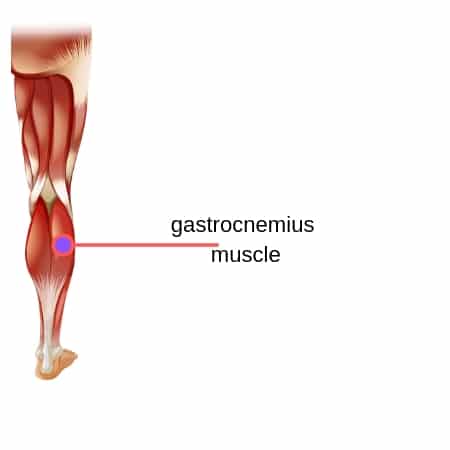
How should you train the gastrocnemius muscle?
Let’s look at a few general tips for working your calves.
Train them regularly
Multiple-time Mr. Olympia winner Arnold Schwarzenegger had a truly amazing physique. Many still consider his physique to be the greatest to ever grace the Olympia stage. He had one weakness in the eyes of the judges: his calves. His legs were huge, as was his upper-body, but his calves just didn’t seem to respond to his normal leg training routine. To shock them into growth, he changed his routine slightly and worked them harder than ever. Instead of just training them once a week, he’d train them several times per week. Not only that, but he also cut all of his training pants at the knees. Now, he and others could see his weak calves, which helped remind him that his calves needed to be trained regularly.
Train them hard
If you are using the same exercises and the same weights over and over again, don’t be shocked if your body stops responding to the stress you’re placing it under. Arnie wanted his calves to grow. Therefore, he performed exercises such as Donkey Calf Raises with 500 pounds (250 kg). Unless you’re incredibly strong, you don’t need to train them that heavily. Instead, you need to use weights that feel heavy to you.
Mix things up
You want to keep your body guessing when it comes to building muscle, so experiment with different gastrocnemius exercises, different weights, different sets, and different reps.
Don’t dwell on your genes
Some people naturally have better calves than others do. For example, former IFBB pro bodybuilder Erik Fankhouser had an enormous set of calves that were bigger than Christmas hams. Other pros, however, barely have any calf development at all. If genetics are against you, you can still make improvements, and you need to work with what you have.
Gastrocnemius exercises you can perform at gym
Now it’s time for us to look at a few gastrocnemius strengthening exercises. If you want strong and developed calf muscles, these exercises rule. Take a look, and you’ll soon be on your way to Gainsville.
1. Single-leg standing dumbbell calf raises
First up we have single leg standing dumbbell calf raises. This is an isolation exercise that focuses on the gastrocnemius portion of the calves. It’s very easy to perform and is great for really isolating the calves. Here’s what to do:
- Begin by taking a dumbbell in your left hand. Placing the balls of your feet on the edge, stand on a step or calf raise block.
- Hook your right leg behind your left leg. Allow the left heel to drop as low as you can.
- Now, standing upright and bracing the core, bring your left heel up as high as possible.
- Hold for a second, squeeze and contract the calf muscle. Then slowly lower your heel back down.
- Perform as many reps as needed and then switch legs and repeat the process.
2. Smith machine calf raises
For some exercises, the Smith machine is a fantastic invention. If you need to add mass to your calves, this machine is your friend. You can perform this exercise either with both or with just a single leg. Here’s a look at how to perform Smith machine calf raises:
- Begin by placing a calf raise block or weight plate directly below the Smith machine’s bar.
- Set the bar to a height with which you are comfortable. Place your chosen weight onto either side of the Smith machine’s bar. Start light to get an idea of how much weight you can comfortably handle.
- Step onto the plate/block ensuring you’re standing on the balls of your feet. Then place the bar directly onto your shoulders, like during a high-bar squat.
- Now, un-rack the bar and raise both of your heels up as high as possible. Making sure to flex your calf and contract it at the top of the movement.
- Hold for a second and then slowly lower your heels back down.
- Repeat for as many reps as required.
An interesting variation that you can try is holding the bar with your palms as during deadlift instead of placing the bar on your shoulder.
3. Dumbbell deadlift with calf raise
Now we’re going to look at how to perform a dumbbell deadlift with calf raise. This exercise strengthens the lower back, hamstrings, and the gastrocnemius. Do it using light weights.
- Begin by holding a dumbbell in either hand. Stand up straight with your feet shoulder-width apart.
- Your arms should be in front of your body so that your palms are facing your thighs. Bend your knees slightly.
- Now, slowly lower your upper body down towards the ground and lean forwards until you begin to feel a light stretch. Keep your back straight.
- Slowly bring your upper body back up to the starting position.
- Before your body becomes straight however, around mid-way through the movement, you should begin to raise both of your heels up off the ground. Get as close to standing on your tippy toes as you can.
- Hold for a second, lower your heels, and repeat for as many reps as required.
4. Squat jumps
Squat jumps work your hamstrings, glutes, and calves and are very simple to perform.
- Begin by interlocking your fingers and placing your hands behind your head, as if you’re being arrested.
- Now, stand with your feet wider than shoulder-width. Keeping your head up, slowly squat down.
- Squat down around one-quarter of the way as this will activate the calves, rather than the hamstrings and glutes.
- Now, explode into the air and jump up, landing on the flats of your feet.
- Repeat for as many reps as needed.
Gastrocnemius exercises you can perform at home
Now we’re going to finish up by leaving you with a series of gastrocnemius exercises that you can perform at home with very little equipment.
5. Double leg calf raises
First off, we’re starting with double leg calf raises. If your excuse for previously not training the calves was a lack of time to get to the gym, now you don’t have that excuse. This exercise can be performed virtually anywhere. It’s simple, yet very effective for developing the calves. To perform double leg calf raises:
- Find any step and begin by standing with both feet on the edge. Here, the only portions of the feet on the step should be your toes and the balls of your feet.
- Now, slowly lift both heels and contract your calves as you do.
- Hold for a second and then lower the heels. Repeat for as many reps as needed.
6. Squat jump and reach
This exercise is a fantastic plyometric movement that will target fast-twitch muscle fibres needed for explosive movement. It will work the calves while also helping to burn calories and improve your flexibility. Here’s what to do:
- Start by standing with your arms down by your sides and your feet shoulder width apart.
- Now, slowly bend your knees and squat down roughly one quarter of the way you would if you performed a full squat.
- Using as much explosive power as you can, extend your hips forward. Jump up straight into the air, lifting both arms overhead, reaching as high into the air as you can.
- Land carefully and repeat for as many reps as required.
7. Resistance band calf flexion
To perform this final exercise, you will need a resistance band. You can purchase one for a very affordable price. Here’s what to do:
- Sit down on a padded floor with both legs extended out in front of you and your back straight.
- Now, place a resistance band around the balls of both of your feet. Make sure to keep your knees straight.
- Flex your feet upwards and forwards so that your toes are pointing away from you.
- Hold for a second and return to the start position
- Make sure to keep the band pulled tight. Repeat for as many reps as required.
We wanted to show you how different the gastrocnemius exercises could be. There also are many other good exercises that you can try.
Calf building workouts with a focus on gastrocnemius
Here are two lower leg workout examples with a focus on the gastrocnemius muscle.
Single-leg standing dumbbell calf raises: 4 sets of 8-15 reps.
Seated calf rises: 3 sets of 8-15 reps.
Squat jumps: 3 sets of 20 -30 jumps.
OR
Smith machine calf raises: 4 sets of 8-15 reps.
Seated calf rises: 3 sets of 8-15 reps.
Dumbbell deadlift with calf raise: 3 sets of 10-15 reps.
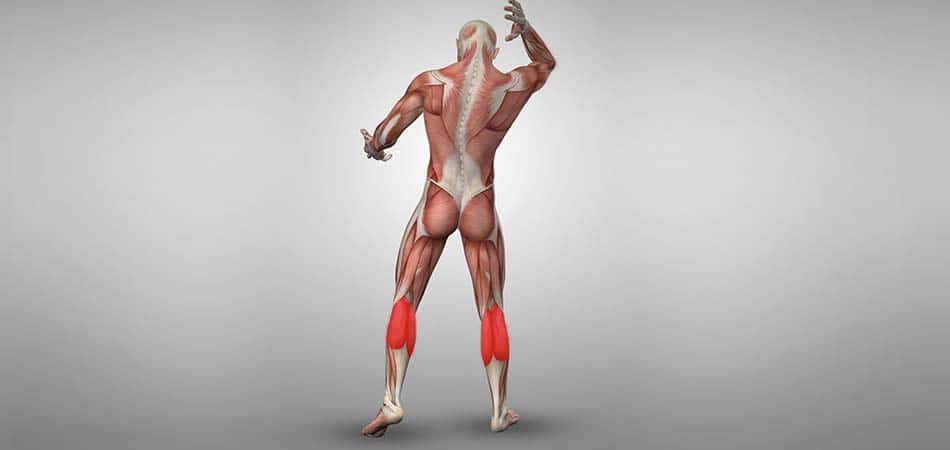

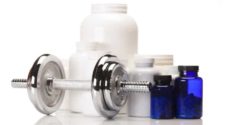
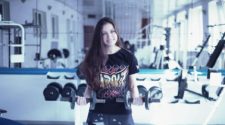
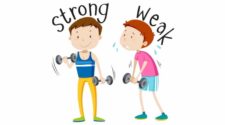

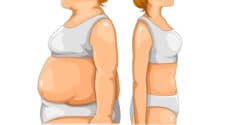
Leave a Reply